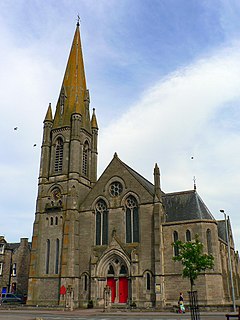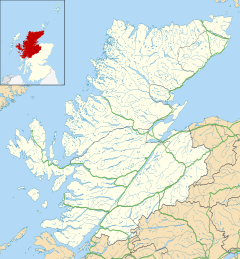Burgh of Nairn
Nairn
|
|
|---|---|
 St Ninian's Church in Nairn |
|
| Nairn shown within the Highland council area | |
| Population | 12,046 |
| OS grid reference | NH887563 |
| • Edinburgh | 162 mi (261 km) |
| Council area | |
| Lieutenancy area | |
| Country | Scotland |
| Sovereign state | United Kingdom |
| Post town | NAIRN |
| Postcode district | IV12 |
| Dialling code | 01667 |
| Police | Scottish |
| Fire | Scottish |
| Ambulance | Scottish |
| EU Parliament | Scotland |
| UK Parliament | |
| Scottish Parliament | |
Nairn (/ˈnɛərn/ NAIRN; Gaelic: Inbhir Narann) is a town and former burgh in the Highland council area of Scotland. It is an ancient fishing port and market town around 16 miles (26 km) east of Inverness. It was the county town of the wider county of Nairn also known as Nairnshire.
The town is now best known as a seaside resort, with two golf courses, award-winning beaches, a community centre/mid-scale arts venue (Nairn Community & Arts Centre), a small theatre (called The Little Theatre) and one small museum, providing information on the local area and incorporating the collection of the former Fishertown museum.
King James VI of Scotland visited the town in 1589 and is said to have later remarked that the High Street was so long that the people at either end spoke different languages, Scots and Gaelic. The landward farmers generally spoke Scots and the fishing families at the harbour end, Gaelic. Nairn, formerly split into Scottish Gaelic- and Scots-speaking communities, was a town of two halves in other ways. The narrow-streeted fishertown surrounds a harbour built by Thomas Telford while Victorian villas stand in the 'West End'. It is believed that the Duke of Cumberland stayed in Nairn the night before the battle of Culloden.
...
Wikipedia

